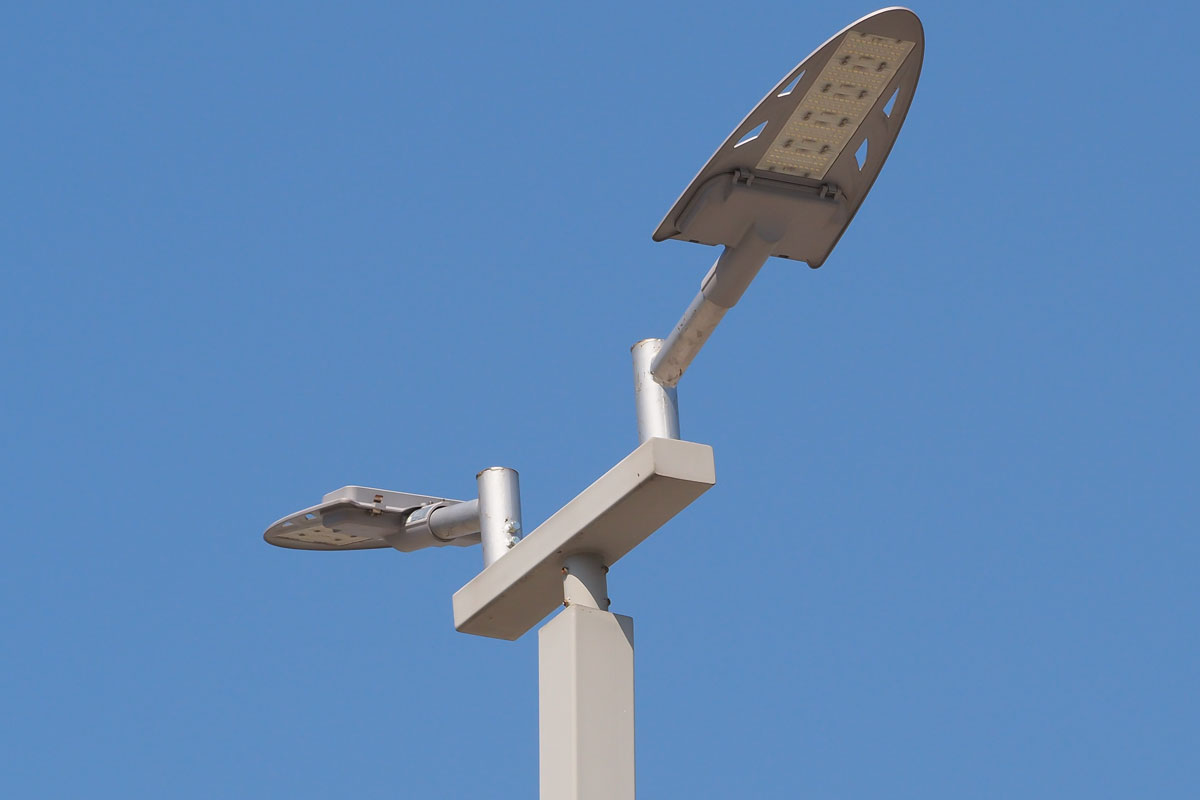
In 2018, over half of the world’s population lived within urban communities, which is expected to rise to 68% by 2050. According to studies conducted by the United Nations, urbanization is a “demographic mega-trend” that will continue well into the future. While urbanization has many benefits for residents and local shops, it also challenges budgeting and securing crucial resources for an ever-expanding community. One of the primary concerns lies in city infrastructure, where the costs of technologies like street lighting are often underestimated or otherwise overlooked.
Smart street lighting aims to decrease these costs while also using more sustainable methods.
The Cost of Traditional Street Light Systems
Streetlights are essential for safety and security, especially in cities where pedestrians often travel on foot or bike. Installing a single, traditional streetlight ranges anywhere from $2,000-$3,000, with an additional $1,000 cost to install electricity to the pole. The costs continue to rise once the bulbs and the cost of the electricity to operate the lights are factored in. Even in the smallest urban regions, streetlights comprise a big portion of the annual budget. For example, with its 315,000 street lights, New York City spends millions of dollars annually to maintain and power these fixtures.
The Benefits of Smart Street Lighting and Cellular IoT Technologies
Decreased Environmental Impact
Energy consumption has become the foremost concern among environmental organizations that warn about the effects of injecting more carbon and methane into our atmosphere. Smart street lighting is estimated to reduce energy consumption by around 67% annually, equivalent to removing 568 cars from the road. In turn, this decreases the need for fossil fuels or natural gas that harms the environment.

Reduced Costs
Transforming traditional LED streetlights into smart streetlighting can pay for itself and significantly reduce the typical energy costs assessed. With improved energy efficiency comes reduced operational expenses, which frees up capital that can be used elsewhere to improve city facilities or address othercommunity needs.
Responsive Lighting
Because smart streetlighting works in conjunction with cellular IoT technologies, they can respond to real-time conditions and events. For instance, they may dim on clear nights and brighten on nights when the weather impacts visibility. They also react to low traffic density and can be programmed to automatically turn on/off on a fixed schedule which may change throughout the year (i.e., during Daylight Saving time.)
Conducive to Other Smart City Capabilities
The infrastructure of smart streetlighting systems is not limited to a city’s lighting needs. It can also support additional smart city capabilities, paving the way for those committed to developing the tech-savvy cities of tomorrow. These functionalities include continuous monitoring, optimization of motor vehicles and foot pedestrian traffic, reduction in air and noise pollution, and generating parking revenue.
Weatherproof and Self-Powered
Traditional streetlights are subject to adverse weather that can result in costly repairs. Likewise, they rely on outsourced power supplies that require communication with the power grid. As a result, in inclement weather, many traditional lights become inoperable until they can be serviced and power is again established. Smart streetlights, however, are designed specifically to stand up to heavy wind, rain, hail, sleet, ice, and snow. They are also powered by their own power supply, keeping them operational even when widespread power outages occur throughout the city.
Current Smart Street Lighting Projects in the US
In the United States, smart streetlighting projects are underway in various cities to modernize infrastructure and improve energy efficiency. The city of Los Angeles, for instance, launched the “Intelligent LED Streetlight Initiative” in 2018. As part of this effort, they aim to replace 215,000 traditional streetlights with intuitive models that reduce energy consumption while also providing real-time data on traffic conditions and air quality.
San Diego is undertaking a similar project, dubbed “Smart City San Diego.” This initiative includes installing around 3,000 smart streetlights that also provide analytical data on traffic, air quality, and other factors to enhance public and personal safety, better urban planning, and reduce energy costs.
These cities have received immense support from companies like GE, Verizon, and Phillips, who have supplied LED bulbs, sensors, IoT devices, and communications technologies to support their efforts to reduce damage to the environment and create safer, smarter cities.
The Signify and Upciti Smart Street Lighting Partnership
Signify and Upciti have partnered to create cutting-edge intelligent streetlight solutions offering impressive functionalities to further support these smart streetlight initiatives and advancements. One curates street LED luminaries that interact with IoT-connected lighting, while the other focuses on computing image analysis sensors. Their strategic partnership allows the development of smart streetlighting to perform next-level tasks, such as communicating the availability of parking spaces to drivers. Their collaboration help generates parking revenue and decreases congestion, transforming today’s cities into “cities of tomorrow.”

How Ambiq Contributes
Ambiq’s ultra-low power microcontrollers are at the heart of millions of edge devices that are the building blocks of the IoT world and smart city management. Indeed, through the advanced Sub-threshold Power Optimized Technology (SPOT®) platform, Ambiq® has helped many leading manufacturers worldwide create products that can operate for days, months, and sometimes years on a lithium battery or a single charge. Visit https://ambiq.com/ for more information.


